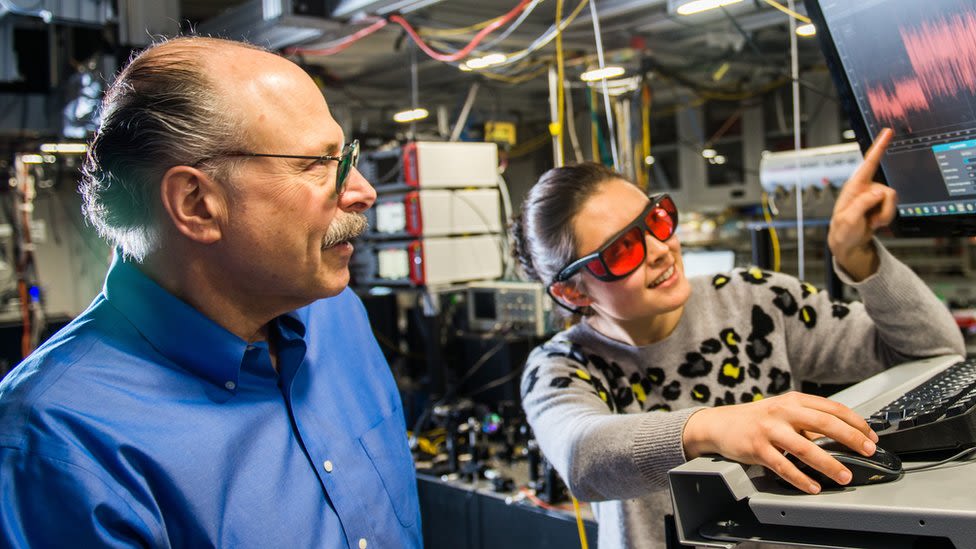Search results
Quantum physics is the study of matter and energy at the most fundamental level. It aims to uncover the properties and behaviors of the very building blocks of nature. While many quantum experiments examine very small objects, such as electrons and photons, quantum phenomena are all around us, acting on every scale.
News about quantum computing, quantum teleportation, microwave circulator
News about Terra Quantum, cryptography library, quantum-resistant algorithms
Also in the news
The history of quantum mechanics is a fundamental part of the history of modern physics. The major chapters of this history begin with the emergence of quantum ideas to explain individual phenomena—blackbody radiation, the photoelectric effect, solar emission spectra—an era called the Old or Older quantum theories. [1]
Quantum mechanics explains how the universe works with things that are even smaller than atoms. It is also called quantum physics or quantum theory. Mechanics is the part of physics that explains how things move and quantum is the Latin word for 'how much'.
2 days ago · contributed. Quantum mechanics [QM] is a branch of physics which describes physical systems so that properties like the energy or angular momentum are discrete quantities that are multiples of a smallest unit or quantum. A famous physicist named Erwin Schrödinger made an example of quantum mechanics, often called Schrödinger's cat.
Apr 19, 2024 · Quantum mechanics, science dealing with the behavior of matter and light on the atomic and subatomic scale. It attempts to describe and account for the properties of molecules and atoms and their constituents—electrons, protons, neutrons, and other more esoteric particles such as quarks and gluons.
The timeline of quantum mechanics is a list of key events in the history of quantum mechanics, quantum field theories and quantum chemistry.
Quantum mechanics. The mathematical formulations of quantum mechanics are those mathematical formalisms that permit a rigorous description of quantum mechanics. This mathematical formalism uses mainly a part of functional analysis, especially Hilbert spaces, which are a kind of linear space.


